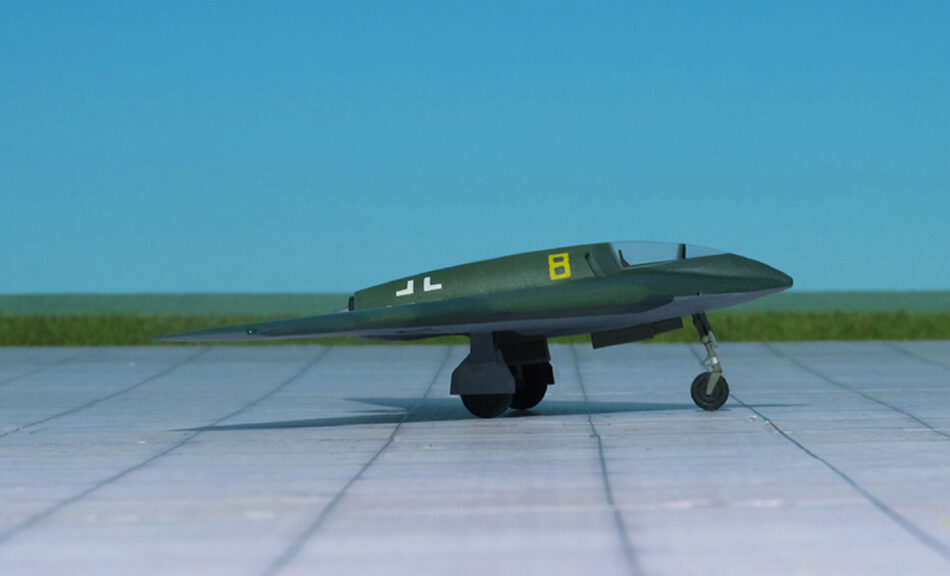TYPE: Interceptor, Project
ACCOMMODATION: Pilot only
POWER PLANT: One BMW 003 turbojet engine, rated at 950 kp thrust, later one Heinkel-Hirth HeS 011 turbojet engine, rated at 1.300 kp thrust
PERFORMANCE: 684 mph
COMMENT: Due to the rapidly deteriorating war conditions in Germany in the last months of WWII, the RLM (Reichs Luftfahrt Ministerium, German Air Ministry) issued a specification for a fighter project that would use a minimum of strategic materials, be suitable for rapid mass production and have a performance equal to the best piston engined fighters of the time. The Volksjäger (People’s Fighter), as it became known as, was issued on September 8, 1944 to Arado, Blohm & Voss, Fiesler, Focke-Wulf, Junkers, Heinkel, Messerschmitt and Siebel. The new fighter also needed to weigh no more than 2000 kg have a maximum speed of 457 mph, a minimum endurance of 30 minutes, a takeoff distance of 500 m (1604′), an endurance of at least 30 minutes and it was to use the BMW 003 turbojet engine.
Although not chosen to submit a design, the Horten Brothers came up with the Ho X that met the specifications laid out by the RLM. Using a similar concept that they had been working on with their Horten IX (Ho 229) flying wing fighter, the Ho X was to be constructed of steel pipes covered with plywood panels in the center section, with the outer sections constructed from two-ply wood beams covered in plywood. The wing featured two sweepbacks, approximately 60 degrees at the nose, tapering into a 43 degree sweepback out to the wingtips. Control was to be provided by combined ailerons and elevators at the wingtips, along with drag surfaces at the wingtips for lateral control. A single BMW 003E turbojet engine with 900 kp of thrust was housed in the rear of the aircraft, which was fed by two air intakes on either side of the cockpit. One advantage to this design was that different jet engines could be accommodated, such as the Heinkel-Hirth He S 011 with 1300 kp of thrust, which was to be added later after its development was complete. The landing gear was to be of a tricycle arrangement and the pilot sat in a pressurized cockpit in front of the engine compartment. Armament consisted of a single MK 108 30mm cannon or a single MK 213 30mm cannon)in the nose and two MG 131 13mm machine guns, one in each wing root.
In order to determine the center of gravity on various sweepback angles, scale models with a 3.05 meter wingspan were built. A full-sized glider was also under construction but was not completed before the war’s end. Further development would have been to add an 240 horsepower Argus As 10C piston engine in a pusher configuration and later the more powerful Heinkel-Hirth He S 011 with 1300 kp of thrust. Due to the ending of hostilities in 1945, the Horten Ho X was not completed (Ref.: 17).












